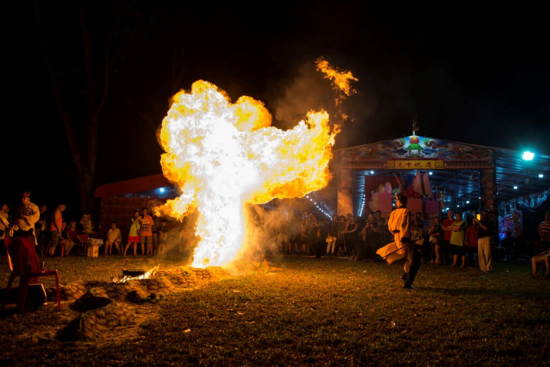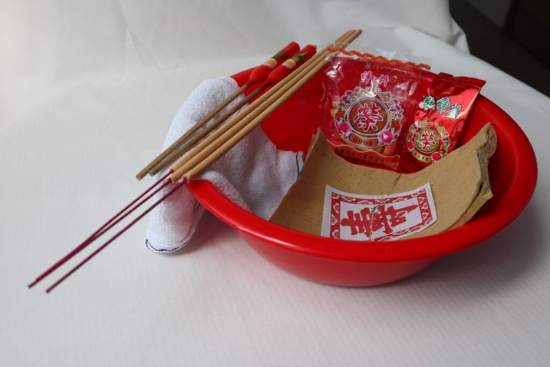Death is arguably one the most significant events for the Chinese community despite the many superstitions and a resulting reluctance to engage with this sombre topic. However, we have learnt that many are willing to share their memories and knowledge of death practices once they understand the importance of documenting and safeguarding this intangible heritage.
This is evident from the two-year-long project initiated by SUSS faculty, Dr Lye Kit Ying and Dr Janice Kam, who have interviewed a variety of stakeholders who engage with Chinese funerals in Singapore. From religious and spiritual leaders, to funeral directors and even the everyday Singaporeans, they have sought to map the social landscape of contemporary Chinese funeral rites, activities, artefacts and beliefs in Singapore.
Here are some key highlights to the team’s fascinating discoveries:
 Hakka “Hell Breaking” Ritual conducted during the 7th lunar month
Hakka “Hell Breaking” Ritual conducted during the 7th lunar month
(when the Hungry Ghost Festival takes place)
The spectacular death ritual, hell breaking 破地狱 or 破城,is mostly practised in Cantonese and Hakka communities. Hakka priests and family members will jump while circling the ‘sand dragon’ to guide the souls out of hell and relieve their sufferings.
.png?sfvrsn=5a0f370_3) Motif on a male burial suit
Motif on a male burial suit
This is the traditional burial suit 寿衣, which used to be gifted to a parent who has reached 60 years of age. The suit is worn yearly at the elder’s birthday, and later, for the elder to don on his or her final journey. While many opt for modern outfits now, donning a burial suit is still very much an important element in Chinese death practices.
 Set of ritual items used in 买水 “buying water” ritual
Set of ritual items used in 买水 “buying water” ritual
When a death has occurred, the eldest son of the deceased will carry a lantern and this set of offerings will be sent to the nearest river to “buy water” from the water guardian. The water will be used to clean the deceased and prepare the body for the funeral. Urbanisation has forced many to adopt this practice such that it lives on even in the current HDB setting.
While some of these practices are not observed entirely today, it is nevertheless important for us to understand the significance of it. According to Dr Janice Kam, these rituals help relatives and loved ones mourn over their loss.
“We talk about closure as if it’s just psychological or emotional, but being part of rituals and handling material objects gets us through that process as well, especially when coming to terms with mortality,” she added.
Learn more about the origins of present-time death rituals from the team’s online exhibition at chinesefuneralpractices.sg for more astonishing revelations!